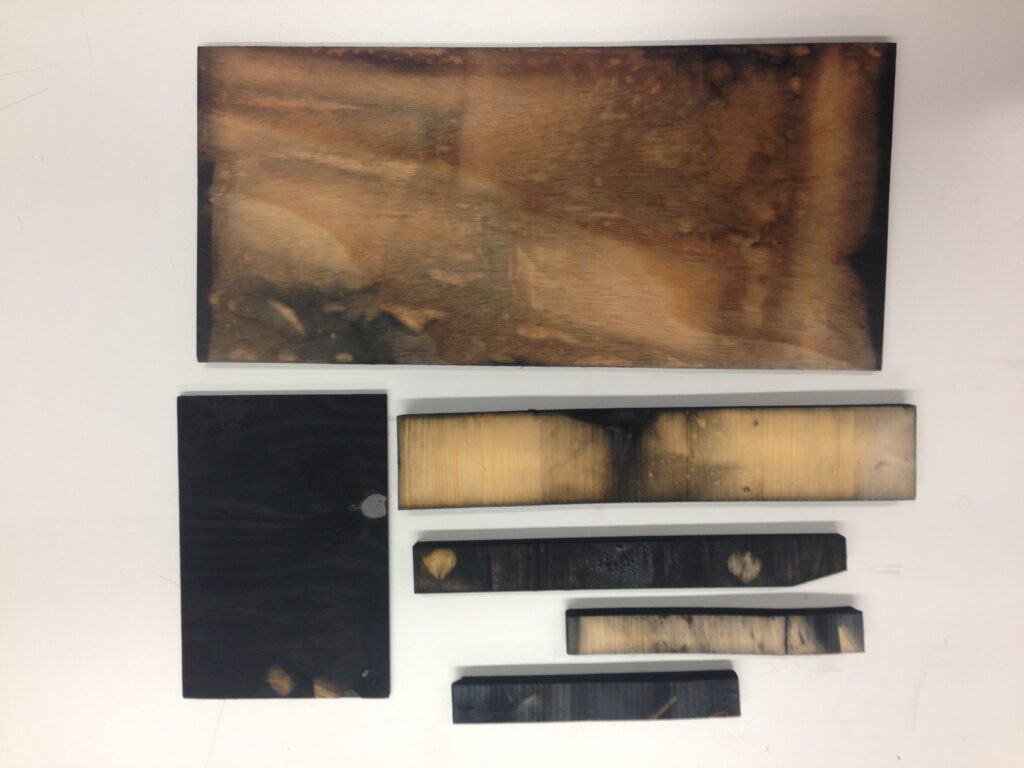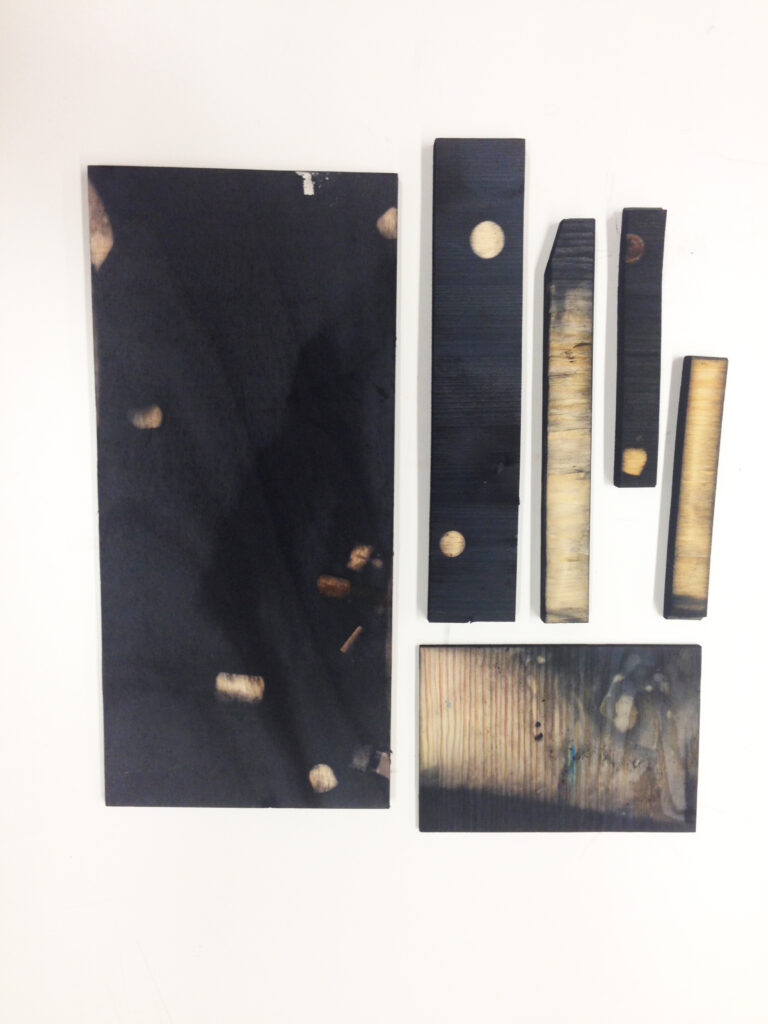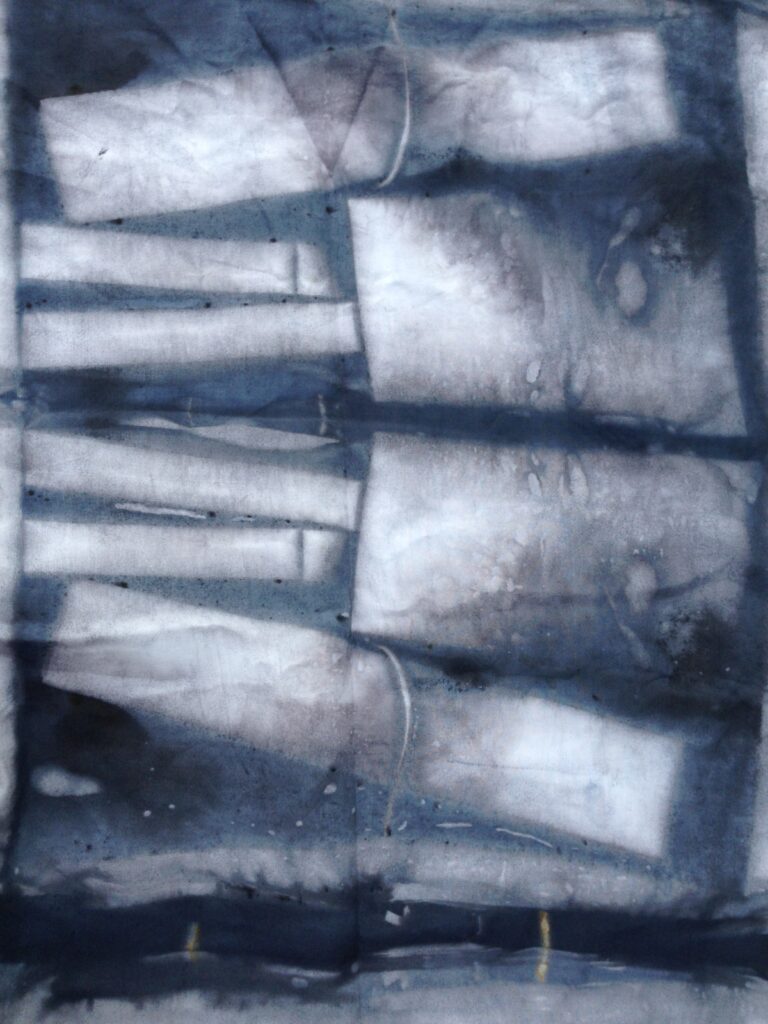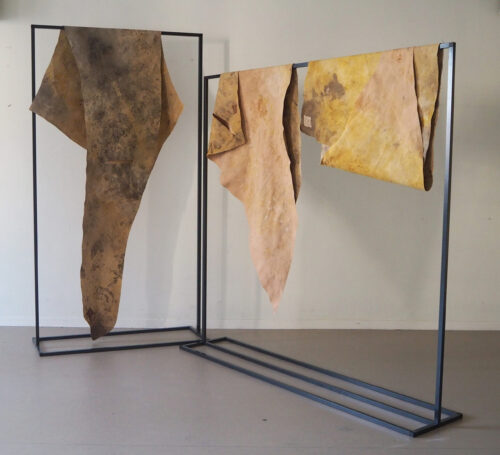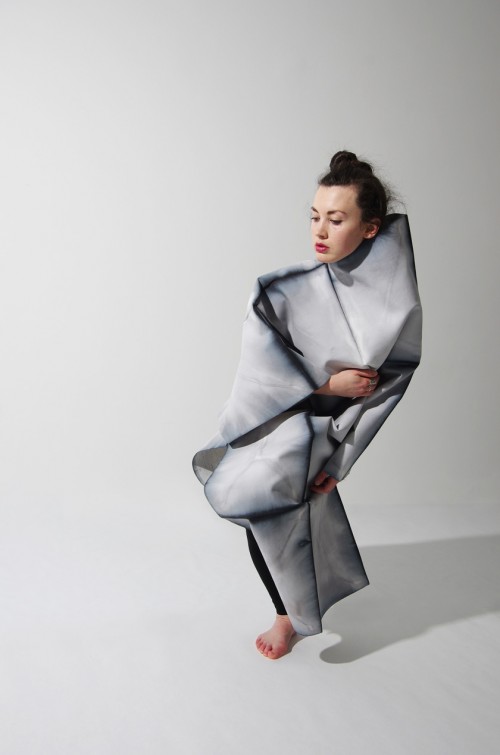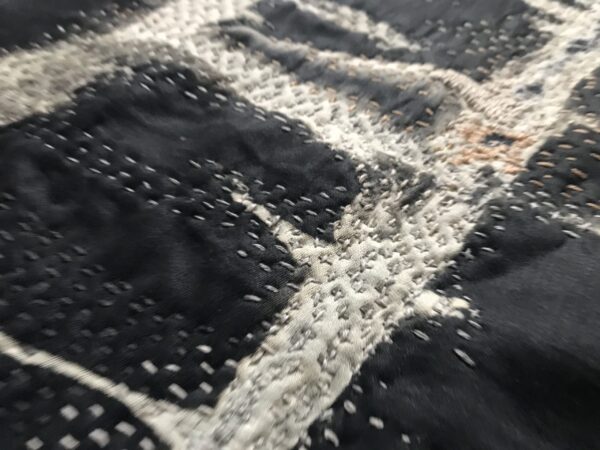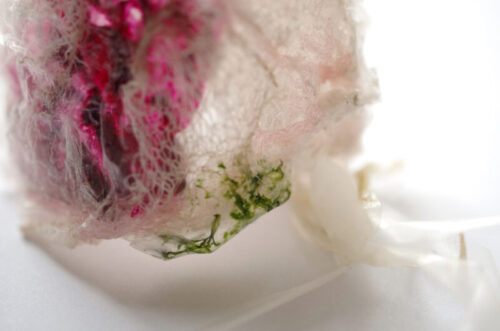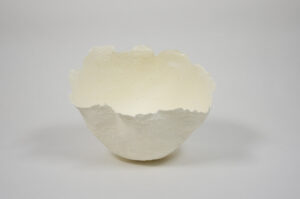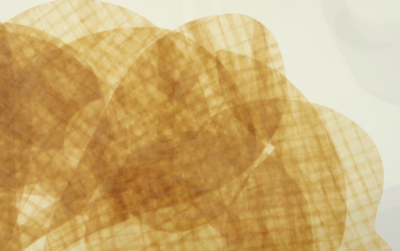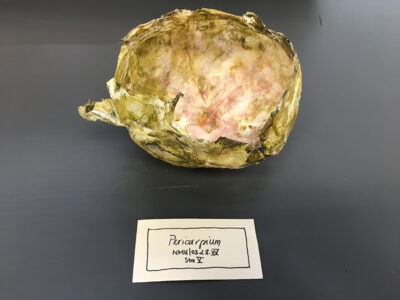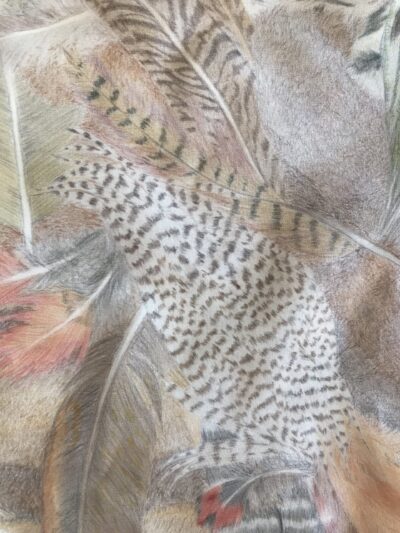Concepts & experiments in textiles & wood | 2015
The famous coffee house chair is an icon and is still considered one of the most successful industrial products in the world today. It marks the beginning of the history of modern furniture. The basis for its design was a new technique for bending solid wood, which Michael Thonet perfected in the 1850s, thus making series production possible for the first time. And there was a brilliant marketing idea: 36 disassembled chairs were packed in a one-cubic-metre box, sent all over the world and assembled on site.
(www.thonet.de)
The disassembly and the special curvature of the chair are the basis for this concept, in which the task was to develop a (textile) object based on a chair, which formally and aesthetically enters into a relationship with the chosen piece of furniture, complements it or adds to it.
This starting point was combined with the Shiborimethode Ita-jime shibori. In this method, the fabric is folded into geometric shapes and the two outer surfaces are covered with plates so that only the edges are dyed. This method is modified insofar as the individual characteristic parts of the famous coffee house chair are used as dyeing plates. The fabric is folded and the individual parts of the chair are attached to the top and bottom of the fabric package. In this way, the typical shapes of the chair influence the pattern of the textile. The chair parts are merely aids, but they get an exciting pattern during the dyeing process due to the clamping and the partial covering. Textile and furniture influence each other’s design without the result being fully controlled.
